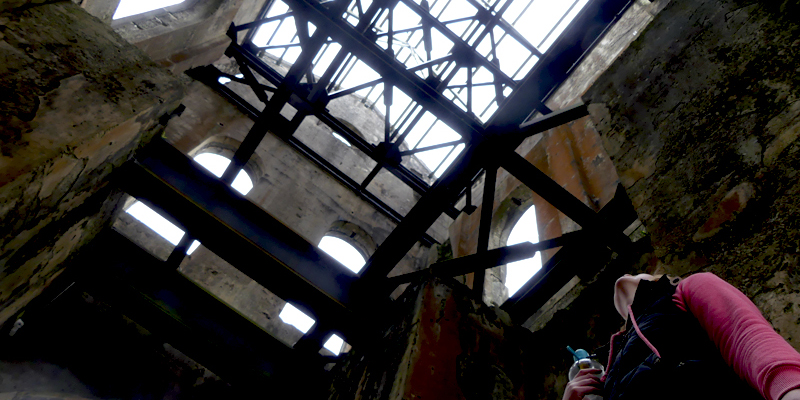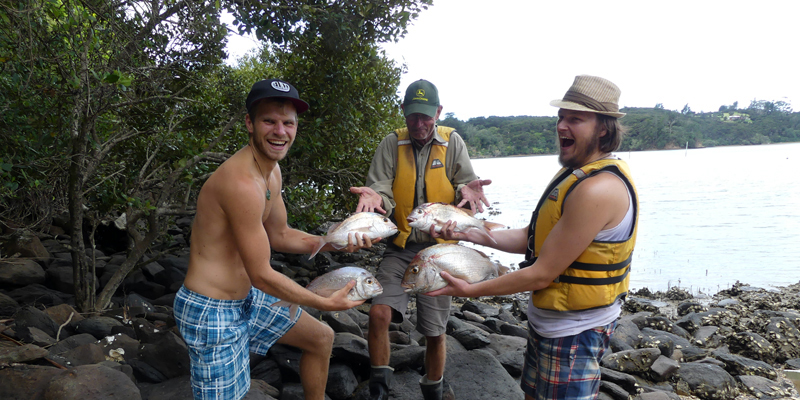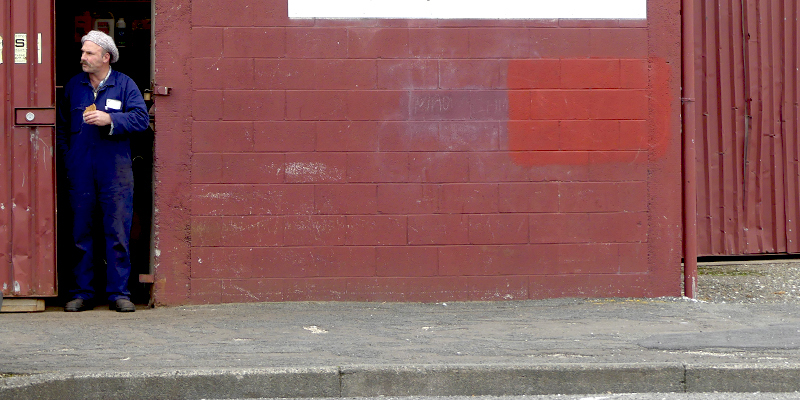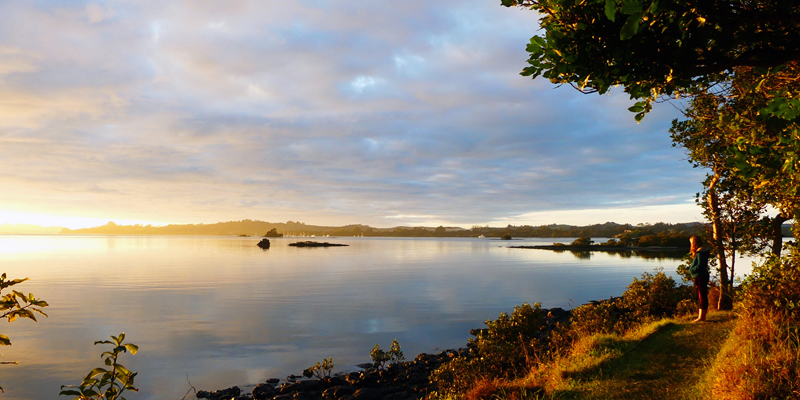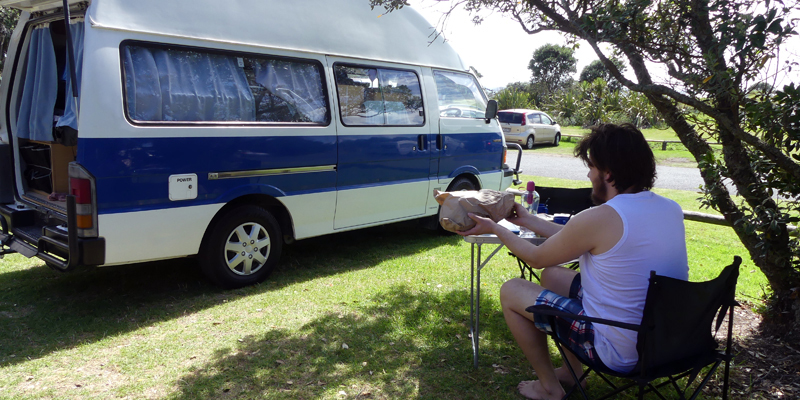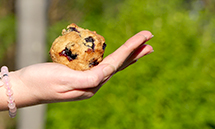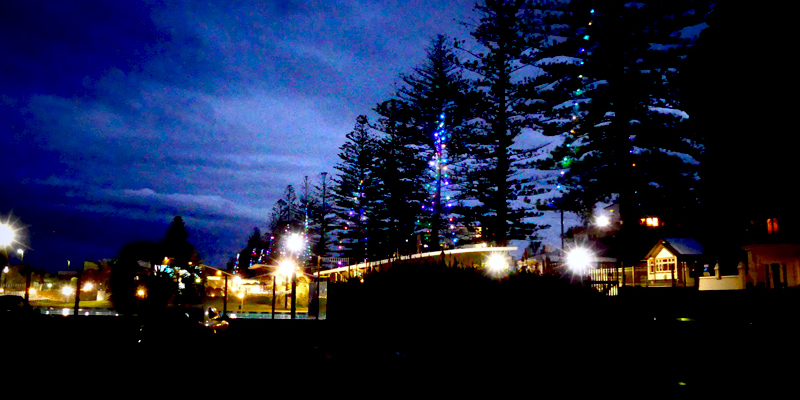The Great Hawke's Bay Sightseeing Tour
The Great Hawke's Bay Sightseeing Tour
26/05/2016Te Mata Peak, Hastings, Cape Kidnappers, NapierNew Zealand, North Island 5 out of 1 ratings
Oops, time is running really quick. We have spent the last 5 weeks picking apples in Hawkes Bay. A long but never boring episode. Mostly we were too tired after work, so we just had a shower, some dinner, prepared food for the next day and went to bed.
There are thousands of tourists visiting Hawkes Bay every year. They are coming for the apples, wines and there is so much more to explore. Therefore we are about to see what beauty the region has to offer: Te Mata, Cape Kidnappers, Art Deco Walks.
Farmers market in Hastings
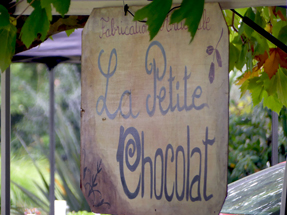
The region is famous for all the fruits and vegetables which are sold at the local farmers market every Sunday. There are about 30 to 40 stands with artistry products, treats like wood-fired pizza, artisan bread (no, we are not starting this discussion about bread now), cakes, cooking ingredients like oils, chutneys, herbs, wines, beer, fresh juices and smoothies, jam, chocolate but definitely also fruit and vegetables. We stroll along the different stands and got tempted by an elderly Italian couple to try their mango chutney. Delicious!
But there is definitely a difference to be seen in the different farmers markets around New Zealand. The one in Wellington has less artistic products but sells at least triple the amount of vegetables and fruits compared to Hastings. And for really cheap prices

We are getting to the top
We drive with Marty through a narrow little entry gate into Te Mata park. The area around the peak is shaped by many walking and mountain biking paths into a recreational area. Havelock North lies just directly at the feet of the Te Mata Peak.
We decide to take the „Giant Circuit“, a 5,4km loop walkway which should take us approximately 3 hours
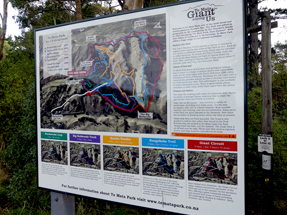
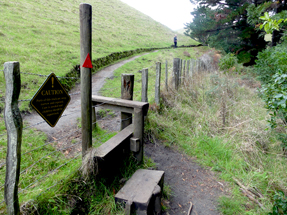 On our way we pass by the „Big Redwoods“, goats, a lot of sheep and some pretty steep rocks. The weather sways between perfectly sunny and dangerously stormy. Obviously it creates a dramatic impression on our pictures throughout the walk way. We really feel connected to the Maori legends and myths that grow around this area:
On our way we pass by the „Big Redwoods“, goats, a lot of sheep and some pretty steep rocks. The weather sways between perfectly sunny and dangerously stormy. Obviously it creates a dramatic impression on our pictures throughout the walk way. We really feel connected to the Maori legends and myths that grow around this area:„The sleeping giant: Te Mata O Rangokako“, Maori chief and ancestor of the Kahungunu tribes, falls in love with the daughter of the chief of Heretaunga. The giant refused to attack the tribe but he wanted to win the heart of the daughter. To be worthy of her he had to solve several nearly impossible tests. 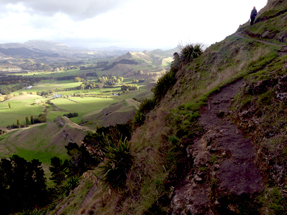
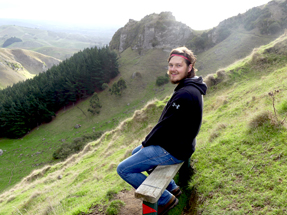 He passed them all but as he was asked to eat the mountain, he failed and died. Afterwards he turned into the mountain.
He passed them all but as he was asked to eat the mountain, he failed and died. Afterwards he turned into the mountain.
Watching the birds before they fly away
After only a few days of apple picking we already enjoy a public holiday. We dont have to work and still get paid for the whole day. It is ANZAC day. A public holiday dedicated to the New Zealand and Australian army corps who had fought in the wars all over the world. It is a real big matter to honour the returned and fallen soldiers and their relatives likewise. In every town there is an RSA club for veterans, big monuments and many events. It seems like Germans cant handle this topic properly.
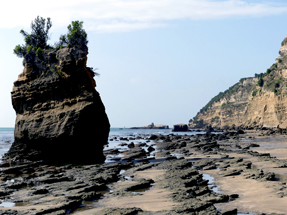
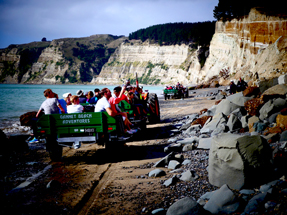
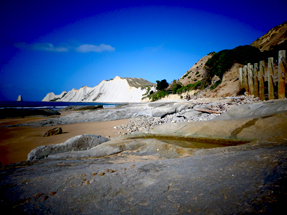
We think that the parade at 5:15am in Napier is way too early for us. At that time the troops landed in Gallipoli in the First World War their Waterloo. Therefore we decided to go to visit the gannets. They live in a colony at the closely located Cape Kidnapper (the name relates to a story with Captain James Cook). The Maori legend describes the Cape as the hook with which the god Maui fished the North Island out of the sea. To get to the Cape you only need to walk about 10km along the beach. Or you can ride a horse or have a ride on the tractor pulled waggon.
We try it without and reach the colony just in time. There's lots of information boards to read and the birds are fun to observe too. They build a nest here on the Cape and fly back to Australia to spend the winter there. The first flight of the youngsters is directly back to Australia. So they must be pretty tough little birds. We take lots of pictures and enjoy the view on the gannets and their natural behaviour. After a short while we have to start our way back otherwise we risk to get wet feet. Back at the orchard we try to organise everything for our next day of work.You have to make the walk as long as it is low tide. Otherwise you might need snorkel gear to get back

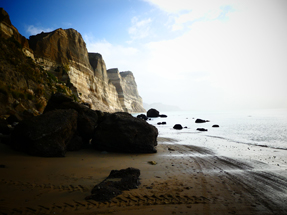
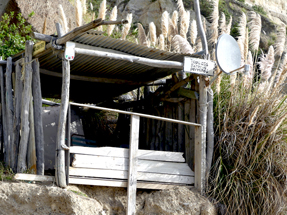
It was definitely a good decision to do the walk on our day off. A few days later the gannets already started their flight into their winter accommodation.
Like the phoenix from the ashes
It was 03.02.1931, when the earth shacked with a magnitude of 7,8 on the Richterskala. Hundreds of people died, thousands lost their personal properties and whole cities were levelled to the ground. This is exactly what happened in Hawkes Bay, New Zealand. Napier was hit the 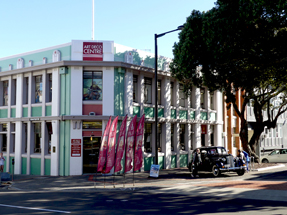
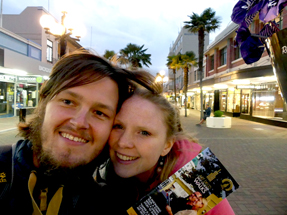 hardest with 161 fatalities people dead out of 258 fatalities in total. The whole town was destroyed through the earthquake itself and the fires that followed after. There are many information boards with pictures from before and after the quake. But still the people havent lost their hope even during those times of hardship. In the contrary they were brave and rebuild their town.
hardest with 161 fatalities people dead out of 258 fatalities in total. The whole town was destroyed through the earthquake itself and the fires that followed after. There are many information boards with pictures from before and after the quake. But still the people havent lost their hope even during those times of hardship. In the contrary they were brave and rebuild their town.
Thats what drove them to go on in Napier and Hastings as well.„Why not rebuild it in a special way“
All the new buildings were built in the stylish new Art Deco Style. In Hastings they build some of the houses in Spanish mission style to be distinguishable from their bigger neighbour town Napier. 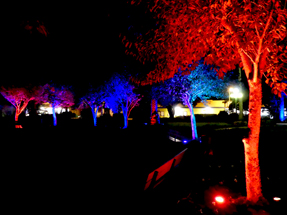
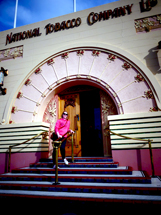
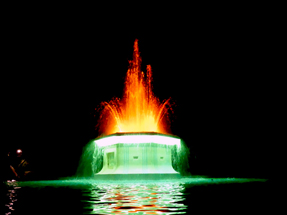 You totally feel like being dragged into a movie scene of the Golden Twenties. The efforts of the town and their inhabitants have created a lively, unique architectural monument. There is even an Art Deco Festival in spring time to celebrate the style of the 1930s.
You totally feel like being dragged into a movie scene of the Golden Twenties. The efforts of the town and their inhabitants have created a lively, unique architectural monument. There is even an Art Deco Festival in spring time to celebrate the style of the 1930s.
- Art Déco
- A french and international style of design, art, architecture an plastic arts of the 1920-1940's
- Where
- First and mainly France (Paris), from where it got to the States, but also Java, Eritrea, New Zealand
- Clasification
- between the floral forms of Art Noeveau and the strict, geometric elements of the International Functionalism; significant ornamental styles, expressed throughout rich decorations and a preference for precious and luxurious materials
- Characteristics
- clear, even & elegant forms as well as shining and contrasting colors
- Forms & Motives
- Symmetric and differential forms, in the 30's streamlines too; zic-zac motives, rising suns, beams, fountains, egyptian, african and chinese influences as well
- Influences
- Inspired by the speed of technological progress of the early 20th century and the resulting euphoria of a bright, near future. Also by relevant historical events like the discovery of the tomb of Tutankhamen in 1922.
all adventures
3 comments
reply
09. Dezember 2017
Yesh Sewdayal
Your writing style is amazing, and fun too! I really enjoyed reading this article about Hawkes Bay. A bittersweet story but one of hope! Thank you for sharing!reply
08. Dezember 2017
Rosie
Oh gosh, I’m not sure I could cope with the stress of trying to beat the tide (in the chill anyway). I bet seeing the gannets was worth it though. You must have been tired after the 20km round trip along the beach, walking on sand can be exhausting!reply
08. Dezember 2017
Marvi
What a lovely way to spend your day off. The views at the Cape and watching the Gannets sounds like a relaxing way to enjoy it..It’s always a great to see cities and countries rebuild themselves after catastrophes like earthquakes too.. The Art Deco sounds like an amazing festival to witness. :)

